
29-08-2025 05:16
 Francois Guay
Francois Guay
I think I may have found the teleomorph of Dendros

29-08-2025 19:04
Thomas FlammerSpores 21.2 - 26.2 x 8.3 - 11.3 µm - Q: 2.20 - 2.

28-08-2025 17:24
Thomas FlammerI know, that this is not the real topic of this fo

27-08-2025 12:02
Pavol PaloHello dear friendsI would like to ask for sharing

25-08-2025 17:37
 François Freléchoux
François Freléchoux
Bonjour,Nous avons trouvé samedi dernier à l'ét

20-08-2025 19:04
Ethan CrensonHello, This asco was found on the same wood as my
anamorph on Equisetum fluviatile
Lothar Krieglsteiner,
11-06-2020 16:18
 At 24.5.2020 I collected two small brown pieces of Equisetum fluviatile in a mesotrophic small bog (Germany, Baden-Württemberg, near Aalen, "Weiherwiesen" near Tauchenweiler) - under the lens it looked reddish so I thought it could become a Stamnaria. As I wetted it today, it looked a bit like a discomycete coming through the epidermis, like a Naevia or Calloria, more cushion-shaped. As it appeared to be an anamorph, it could belong to such a fungus (Callioria has an anamorph, but to me it seems to be quite different), or to another group of ascomycetes. The conidia (or as I think to be such) are about 45-65/3-4 µm large, and some are septate.
At 24.5.2020 I collected two small brown pieces of Equisetum fluviatile in a mesotrophic small bog (Germany, Baden-Württemberg, near Aalen, "Weiherwiesen" near Tauchenweiler) - under the lens it looked reddish so I thought it could become a Stamnaria. As I wetted it today, it looked a bit like a discomycete coming through the epidermis, like a Naevia or Calloria, more cushion-shaped. As it appeared to be an anamorph, it could belong to such a fungus (Callioria has an anamorph, but to me it seems to be quite different), or to another group of ascomycetes. The conidia (or as I think to be such) are about 45-65/3-4 µm large, and some are septate.Who can contribute an idea?
Best, Lothar
Erwin Gruber,
13-06-2020 20:07
Re : anamorph on Equisetum fluviatile
Dear Lothar, the shown anamorph is definitely Titaeospora, saying the teleomorph which will grow from same places will be the most likely Stamnaria persoonii, as i could verify only that Stamnaria to inhabit Equisetum fluviatile.
Beste Grüße
Erwin
Beste Grüße
Erwin
Lothar Krieglsteiner,
13-06-2020 21:38

Re : anamorph on Equisetum fluviatile
Hello Erwin,
thank you very much! So my first thought was not so bad :-)
Best regards, Lothar
thank you very much! So my first thought was not so bad :-)
Best regards, Lothar
Erwin Gruber,
14-06-2020 11:59
Re : anamorph on Equisetum fluviatile
You are welcome, Lothar.
At likewise sites you might find conidiomata on Equisetum arvense, looking quite the same, containing an equal type of anastomosing, slender conidia. Such may represent either true Stamnaria persoonii, or "S. mougeotii" (nom. prov. by me). Ascocarps are easily separable by macro- and microscopic investigation.
I didn't use "Titaeospora equiseti" at prior comment, as i could not know to which kind of Stamnaria the type belonged, and which collection was the right type for. Still true Titaeospora conidia on Equisetum are quite characteristic and do indicate the genus Stamnaria.
Best regards
Erwin
At likewise sites you might find conidiomata on Equisetum arvense, looking quite the same, containing an equal type of anastomosing, slender conidia. Such may represent either true Stamnaria persoonii, or "S. mougeotii" (nom. prov. by me). Ascocarps are easily separable by macro- and microscopic investigation.
I didn't use "Titaeospora equiseti" at prior comment, as i could not know to which kind of Stamnaria the type belonged, and which collection was the right type for. Still true Titaeospora conidia on Equisetum are quite characteristic and do indicate the genus Stamnaria.
Best regards
Erwin
Lothar Krieglsteiner,
14-06-2020 12:23

Re : anamorph on Equisetum fluviatile
Hello Erwin,
thank you very much for the additional information.
I will try to look for more Stamnaria samples in future.
Only once, many years ago, I had a collection of a teleomorph I then determined as S. persoonii, on Equisetum arvense (published without details in my dissertation). But, in those times there were no other species (at least not known to me).
Best regards, Lothar
thank you very much for the additional information.
I will try to look for more Stamnaria samples in future.
Only once, many years ago, I had a collection of a teleomorph I then determined as S. persoonii, on Equisetum arvense (published without details in my dissertation). But, in those times there were no other species (at least not known to me).
Best regards, Lothar
Erwin Gruber,
15-06-2020 11:33
Re : anamorph on Equisetum fluviatile
Dear colleague Lothar
As you liked to find other members of genus Stamnaria, i will add short notes on the genus' association to diverse kinds of horsetail. These were arranged by Andrew Simon, naturalist from Galiano Island, British Columbia, basing on my knowledge shared by comments.
I altered Andrew's concept by some supplements. Specific characters of ascomycetes are still missing, will perhaps be added in future.
Best regards
Erwin
As you liked to find other members of genus Stamnaria, i will add short notes on the genus' association to diverse kinds of horsetail. These were arranged by Andrew Simon, naturalist from Galiano Island, British Columbia, basing on my knowledge shared by comments.
I altered Andrew's concept by some supplements. Specific characters of ascomycetes are still missing, will perhaps be added in future.
Best regards
Erwin
Lothar Krieglsteiner,
15-06-2020 21:59

Re : anamorph on Equisetum fluviatile
Dear Erwin,
thank you very much for the files! This will be very helpful if I will be successful with my search.
Yours, Lothar
thank you very much for the files! This will be very helpful if I will be successful with my search.
Yours, Lothar

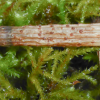
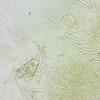
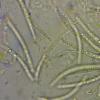
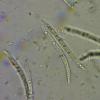
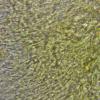

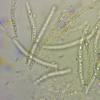
 Notes-on-Stamnaria-shared-2-0001.docx
Notes-on-Stamnaria-shared-2-0001.docx